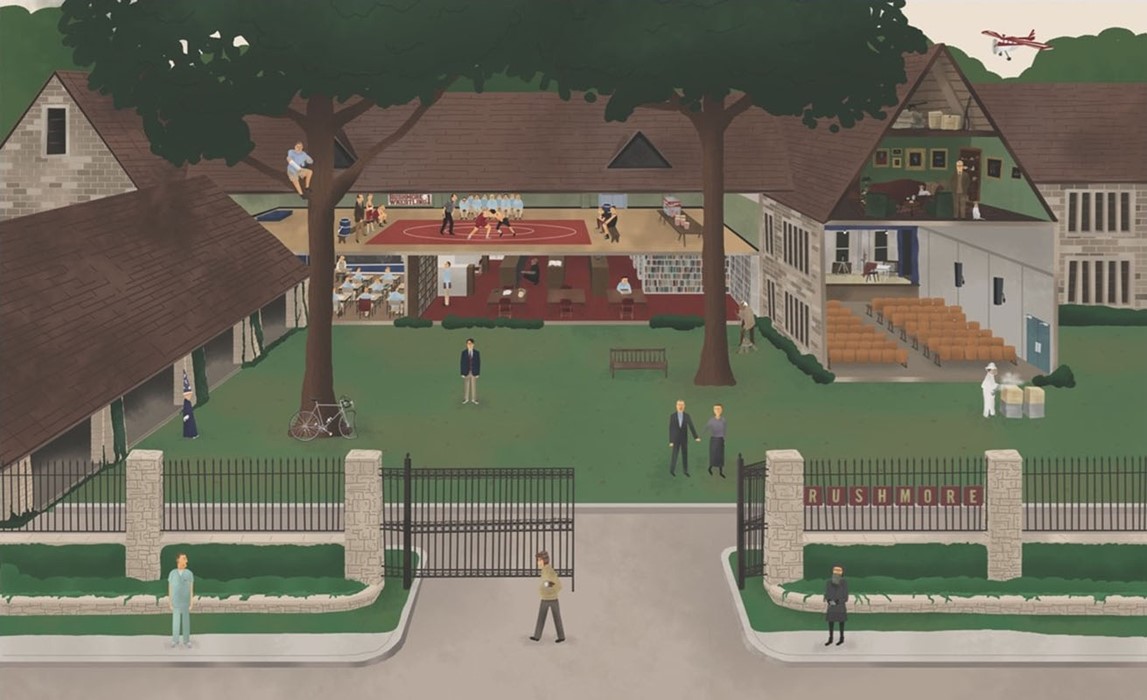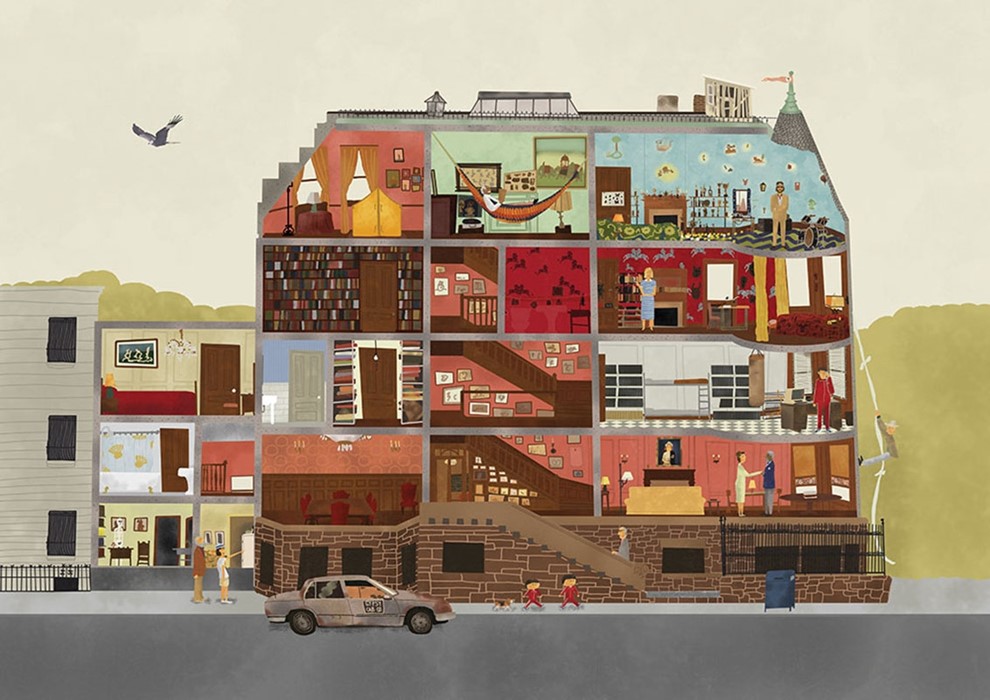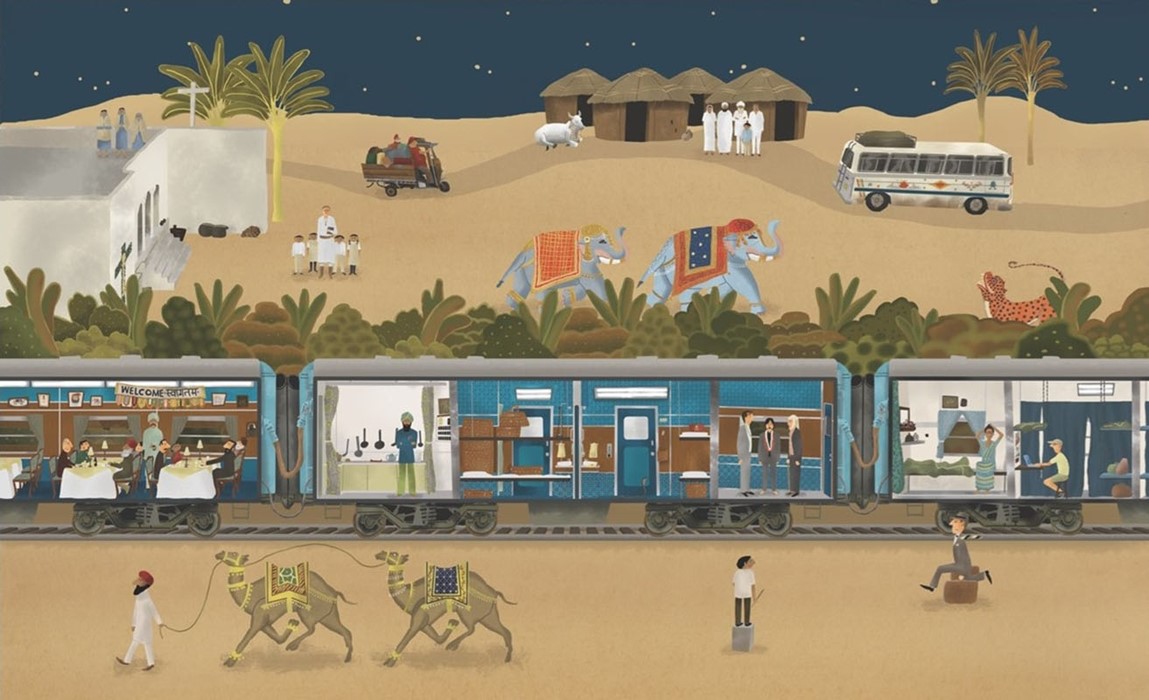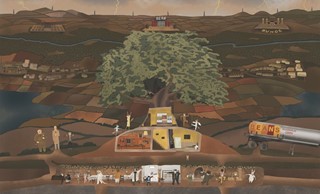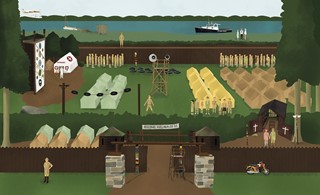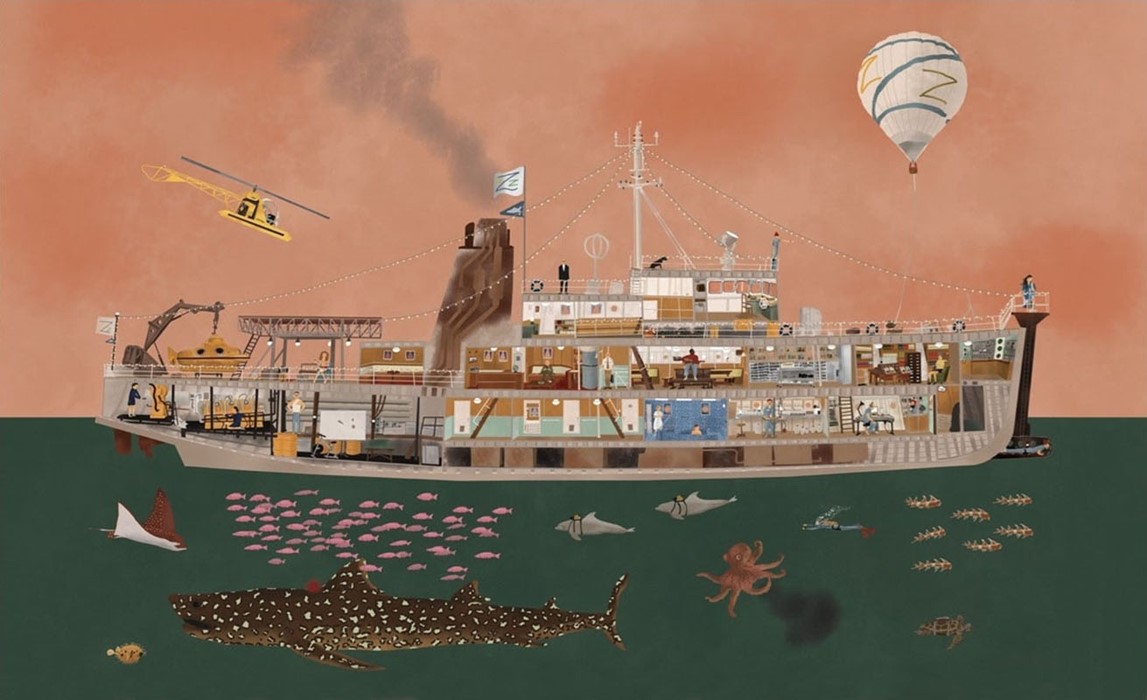There are many, many stars in Wes Anderson’s films. There are the actual stars, of course – Bill Murray, Anjelica Huston, Cate Blanchett, Gwyneth Paltrow, Jason Schwartzmann, the Wilson brothers, Adrien Brody; the scripts, with their heartfelt wit and wisdom that will be quoted into eternity – “I think we're just gonna to have to be secretly in love with each other and leave it at that”; and the costumes – Fendi furs, tennis bands, orange pie collared dresses, scout uniforms, Indian gajra, foxes in balaclavas and referential corduroy suits. But it's the detailed structure of the whole, the creation of a multitextured, hypercoloured universe just half a step away from normality, that makes his films timeless and unique.
In the introduction to Matt Zoller Sietz's book The Wes Anderson Collection, Michael Chabon draws the connection between Wes Anderson's films and Joseph Cornell's boxes, as both artists draw a line around their creations – one with a box, one with a camera lens – packaging up their strange, sad, funny and beautiful visions of the world for us to admire. It is these worlds that enchant and bewitch us, and the spirit of each one that has been captured in Max Dalton's enchanting illustrations, that feature in, and bookend, Sietz's tome. So in anticipation of Anderson's latest creation, The Grand Budapest Hotel, we present Dalton's distillation of Anderson's films so far, from Bottle Rocket to Moonrise Kingdom.
The Grand Budapest Hotel is out on March 7. The Wes Anderson Collection is out now, published by Abrams.
Follow AnOther Loves Wes on pinterest.

